May 10, 2019LABOUR MARKET TRENDS - APRIL 2019 Nova Scotia's seasonally adjusted employment level was down 2,100 in April, compared to March, at a level of 464,400. Employment is 7,500 higher than it was last April.
Nova Scotia’s employment declined for the first time in ten months. Compared to March, Nova Scotia’s labour force increased by 1,600, rising to 498,800 in April. With employment declining and labour force increasing unemployment increased by 3,700 persons. The unemployment rate was up 0.7 percentage points to 6.9 per cent in April.

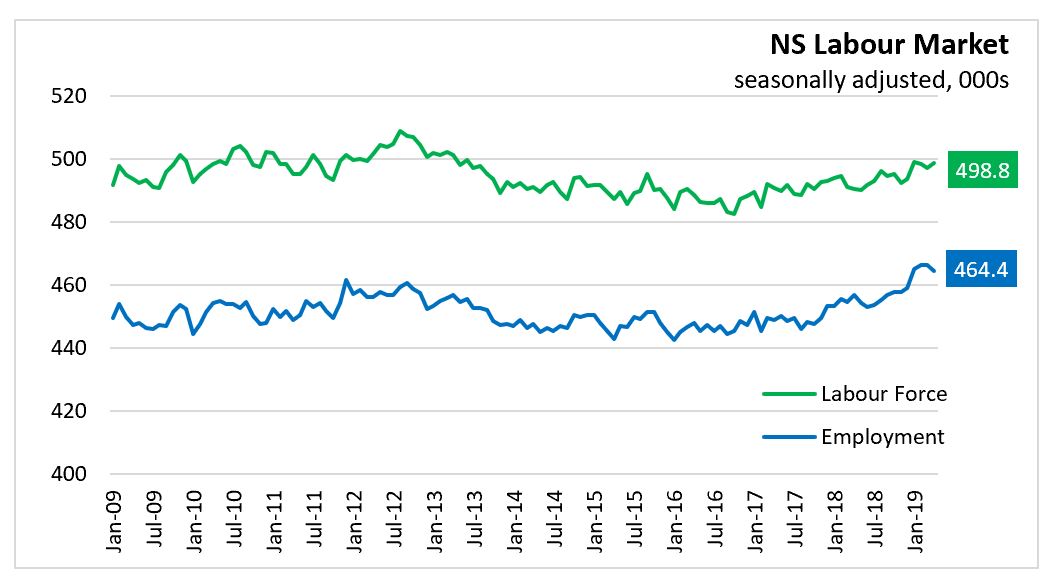
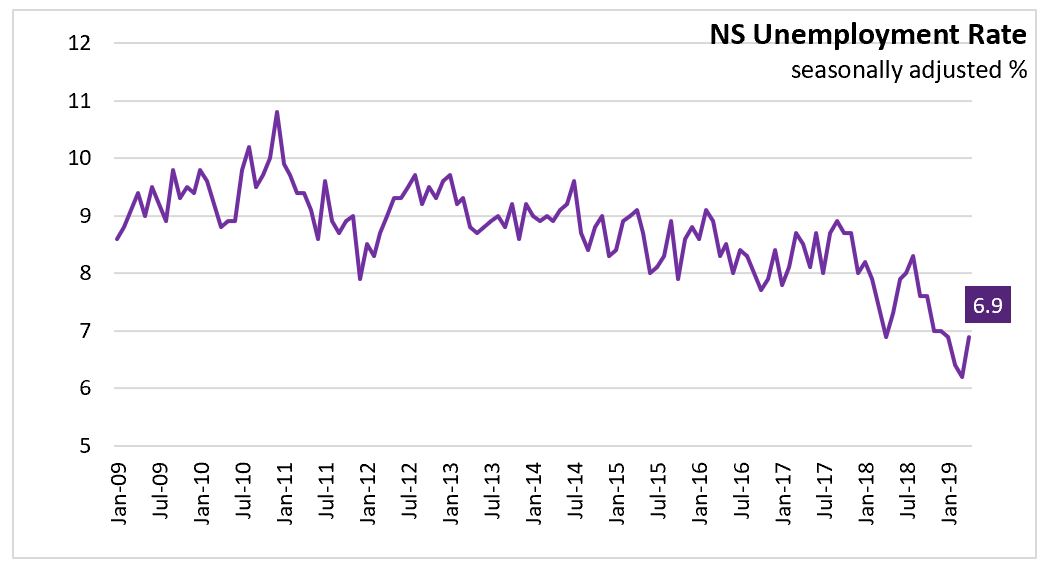
In April, full-time employment declined 1,600 while part-time employment was down 600. Note: Changes in part-time and full-time employment can include the net impacts of changing hours of work within the same position.
Compared with April 2018, the labour force has increased by 8,200 while employment is up 7,500. The year-over-year increase in employment includes a rise of 1,900 in full time employment and an increase of 5,600 in part time employment. The unemployment rate was unchanged compared to April 2018.
Comparing the first four months of 2019 with the same months in 2018, the labour force grew by 5,900 (+1.2%) while employment was up by 10,400 (+2.3%). This pushed the year-to-date unemployment rate down from 7.6 per cent Jan-Apr 2018 to 6.6 per cent in Jan-Apr 2019.

Age Cohorts
In April 2019, the monthly unemployment rate for the 15-24 age cohort increased 1.2 percentage points to 13.9 per cent. The unemployment rate for the 25-54 year old age cohort rose 0.3 percentage points to 5.4 per cent, and for those aged 55 years and older, the unemployment rate increased 1.5 percentage points to 6.5 per cent.
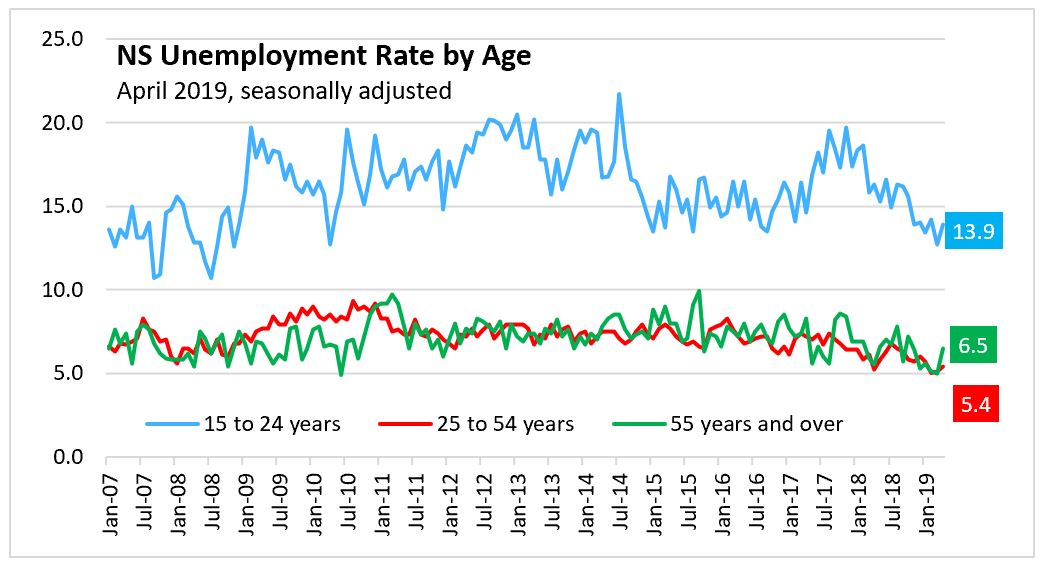
Year-to-Date
Comparing the first four months of 2019 to the same period in 2018, the youth cohort (aged 15-24) saw a decrease in population (-300) along with increases of 4,100 in labour force and 6,100 in employment. With the number of unemployed declining as a proportion of the labour force, the unemployment rate for 15-24-year olds decreased 3.7 percentage points to 13.6 per cent in the first four months of 2019.
Within the 25-54 age cohort, the population in January-April 2019 was 1,200 higher than it was in the same period of 2018. Employment among core aged workers rose by 400 and labour force dropped by 1,400. Unemployment in this age cohort dropped by 1,800, and as a result, the unemployment rate declined by 0.6 percentage points over last year to 5.3 per cent in Jan-Apr. 2019
In year to date terms, older workers (55+) reported a population increase of 6,300 in January to April 2019. The labour force for older workers was up 3,200 and employment increased by 3,900. Employment gains outpaced the rise in labour supply, reducing unemployment by 600 and decreasing the year to date unemployment rate from 6.3 per cent in Jan-April 2018 to 5.6 per cent in Jan-April 2019.
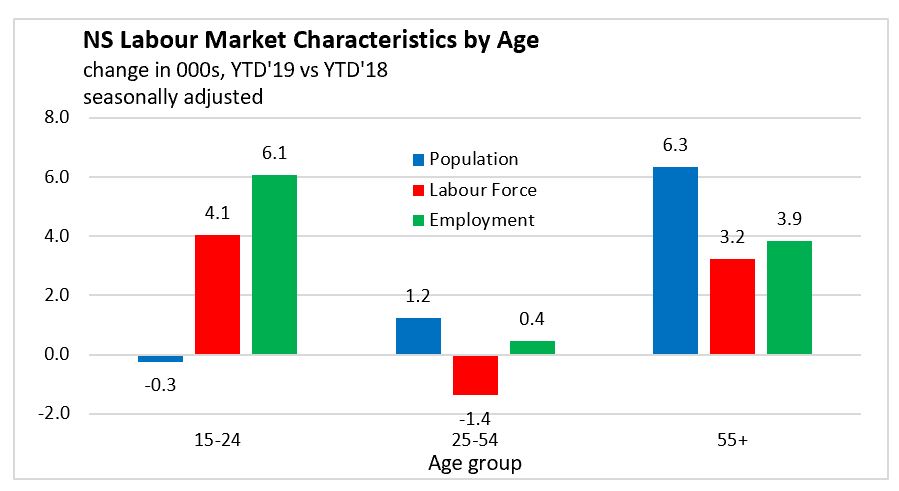
Sectors – Year to Date
Looking at the results by class of worker for the first four months of 2019, employment increases for the private sector (+6,200) and for the public sector (+5,400) offset self-employment declines (-1,200). In Nova Scotia, there was an average of 289,200 private sector employees, 117,300 public sector employees, and 59,200 self-employed for the first four months of 2019.
Among goods-producing sectors, the first four months of 2019 saw employment growth concentrated in forestry, fishing, mining, quarrying and oil and gas (+1,600) as well as manufacturing (+1,100) offsetting employment losses in utilities. Construction employment was unchanged. Services-producing employment increased by 7,300 compared to the first four months of 2018. The largest increases come from wholesale/retail trade, , health care, and information, culture and recreation. The largest declines came from finance/insurance, business, building, and other support services.
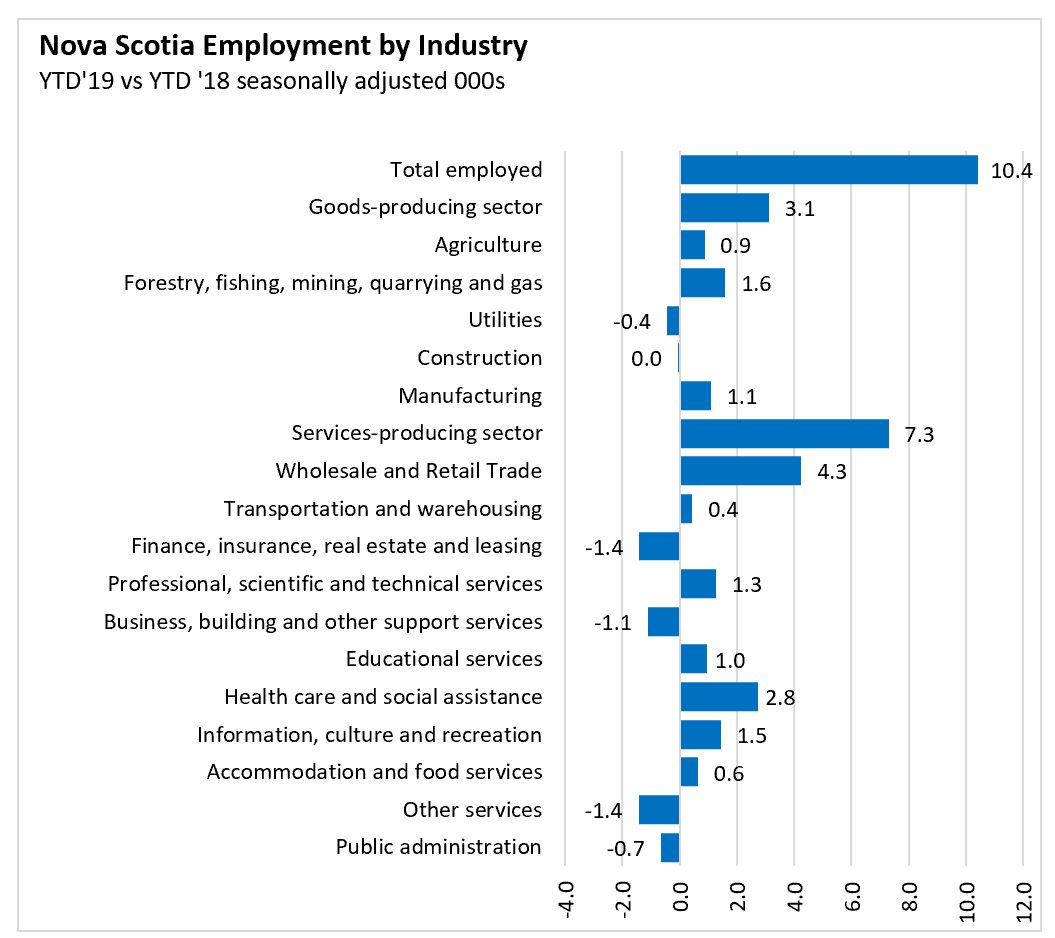
Regions – Year-to-Date (3-month moving average)
The Cape Breton region showed an increase in employment (200) with labour force increasing by 700, and an increase in unemployment (600). This put upward pressure on the unemployment rate, which increased from 15.2 per cent in January-April 2018 to 16.1 per cent in January-April 2019.
For the North Shore region, the labour force declined by 2,600 and employment declined by 600. With labour force falling and unemployment dropping by 2,000, this caused a 2.5 percentage point drop in the unemployment rate from 9.6 per cent to 7.1 per cent.
The Annapolis Valley reported an increase of 200 for employment along with a decline of 800 for the labour force. Unemployment dropped by 1,000, and the net result was drop in the average unemployment rate of 1.6 percentage points to 7.5 per cent.
The Southern region saw an increase of 4,800 in employment along with an increase of 4,600 in the labour force. With unemployment declining by 300 over this period, the unemployment rate was down 1.2 percentage points to 7.3 per cent so far in 2019.
Halifax experienced an increase in employment of 6,200 along with an increase in the labour force of 2,800. With unemployment declining by 3,500, there was a drop in the unemployment rate of about 1.5 percentage points to 5.0 per cent in Halifax.

Provincial Comparisons
The Nova Scotia unemployment rate was 6.9 per cent in April 2019, unchanged from a year ago. The Canadian unemployment rate was 5.7 per cent, down 0.2 percentage points with one year ago. Canada's unemployment rate remains near record lows since the start of the Labour Force Survey.
Compared to the same month one year ago, New Brunswick and Ontario reported higher unemployment rates. The lowest unemployment rate among the provinces this month was in British Columbia (4.6 per cent) while the highest was in Newfoundland and Labrador at 11.7 per cent.
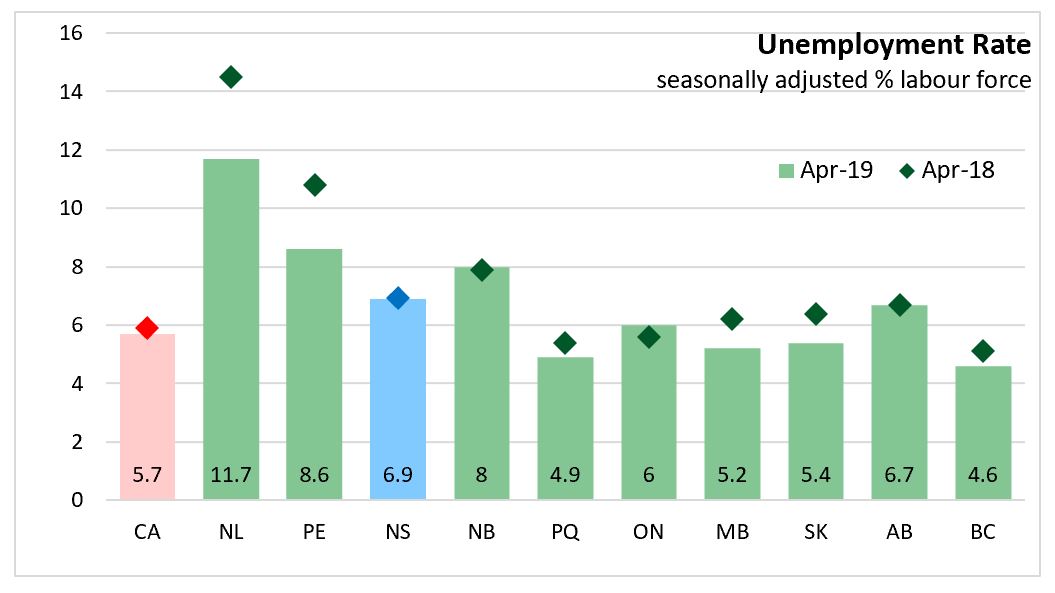
Employment across the country was up in all provinces in year to date terms. The largest gains in percentage terms was seen in Newfoundland and Labrador (3.2%) and in British Columbia (3.0%). Nationally, employment was up 2.0 per cent.

National Comparisons: Cities (Monthly)
The seasonally adjusted unemployment rate for the Halifax Census Metropolitan Area (CMA) in April 2019 was 5.1 per cent (3 month moving average). Victoria (3.1 per cent) had the lowest unemployment rate among CMAs, while the highest was in St. John’s (7.9 per cent).
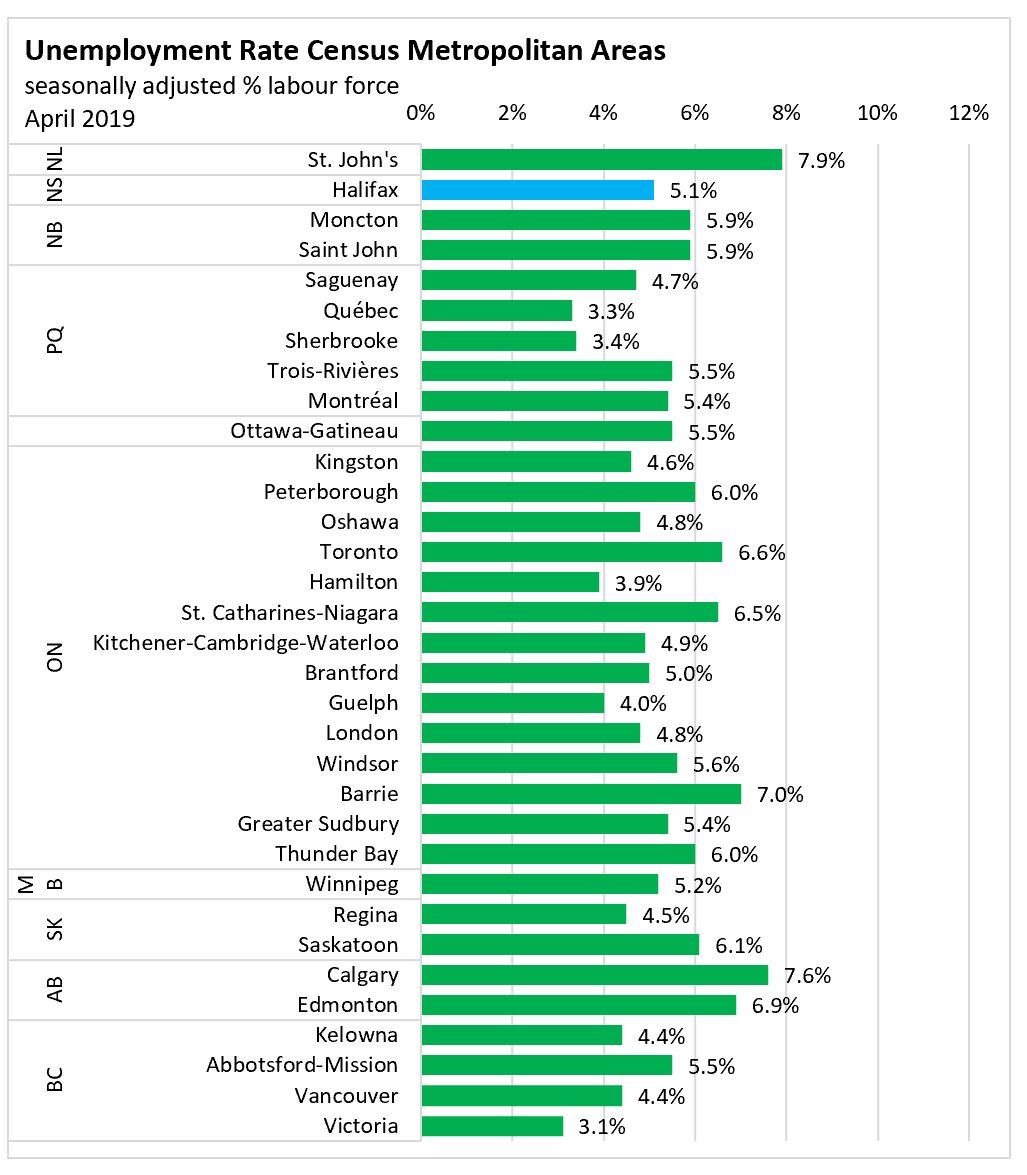
The seasonally adjusted employment rate for the Halifax CMA was 63.9 per cent, level compared to last month. Saguenay had the lowest employment rate (54.7 per cent), while Guelph had the highest (68.4 per cent).

Halifax’s employment (3 month moving average) for April 2019 was down 0.3 per cent compared to the March 2019 result. The largest gain among CMAs was in Brantford, where employment rose by 2.5 per cent.
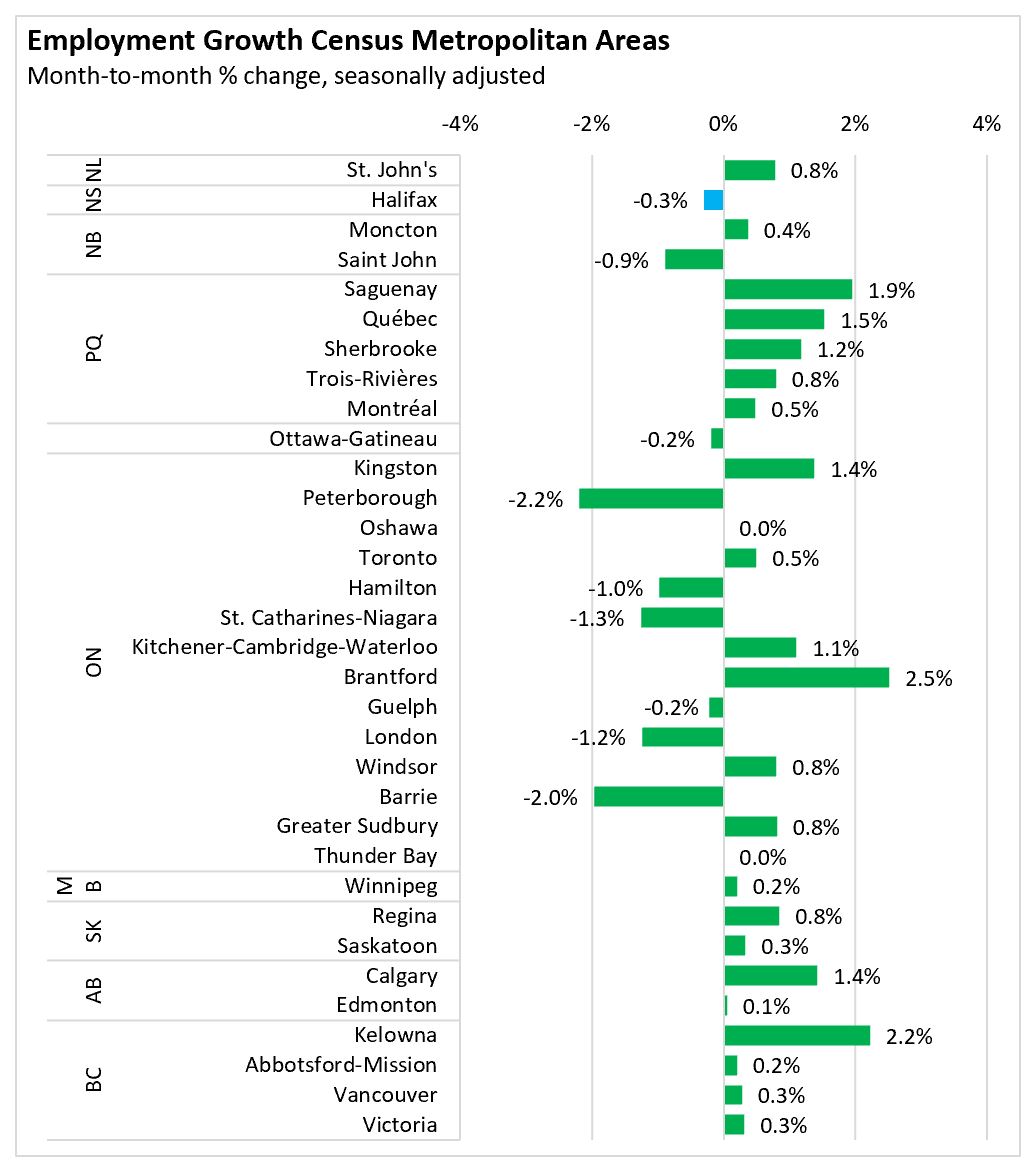
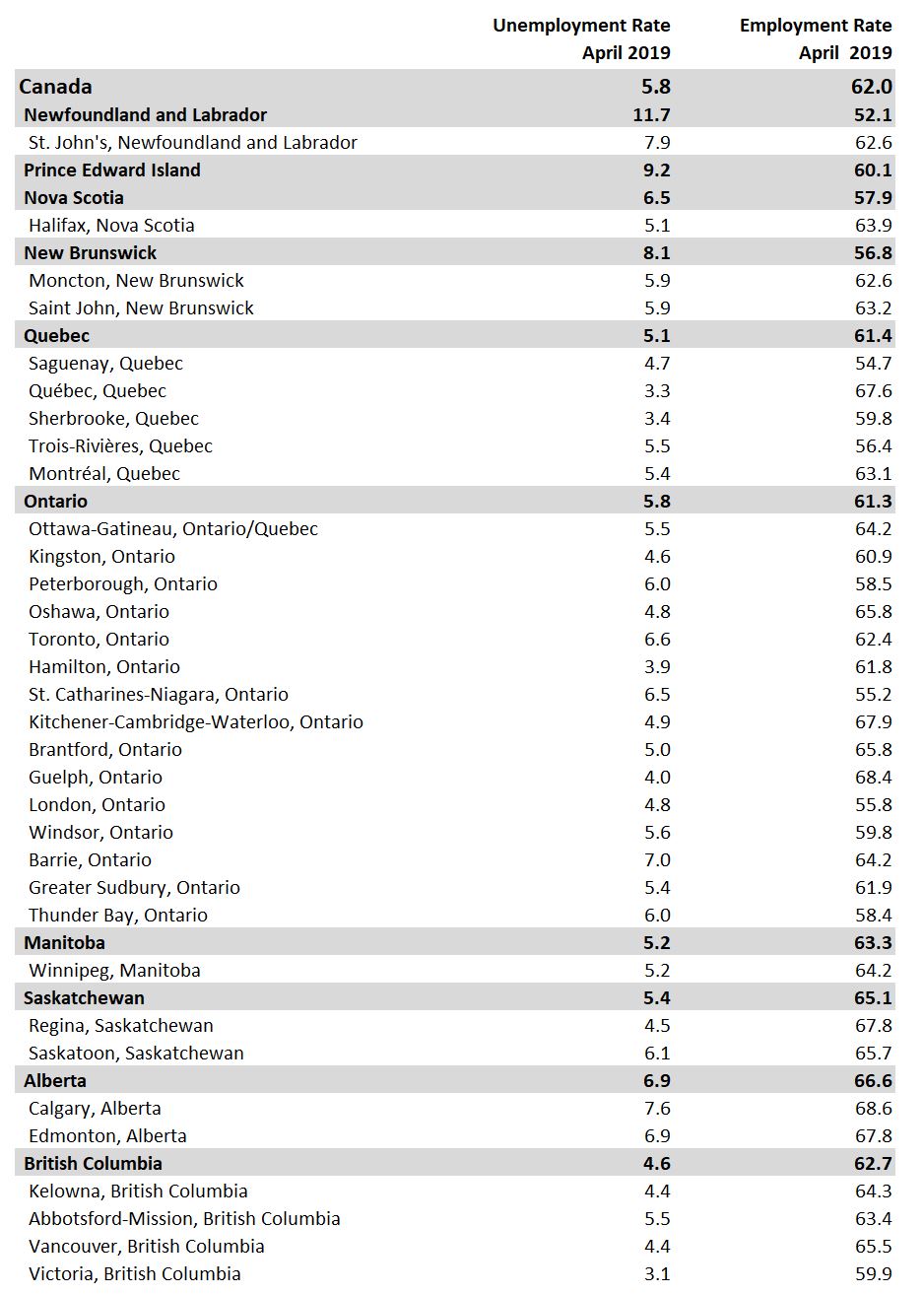
Note: Seasonally adjusted, 3 month average.
With the January 2019 Labour Force Survey release, Statistics Canada has changed the processing systems that is used to impute data of incomplete records of the survey. Statistics Canada notes that for most LFS estimates the difference from the new system will be small, but some areas could be impacted such as part-time employment and employment by firm size. The transition is being monitored and historical revisions of series maybe made in the future. For more details, see Transition of Labour Force Survey Data Processing to the Social Survey Processing Environment (SSPE)